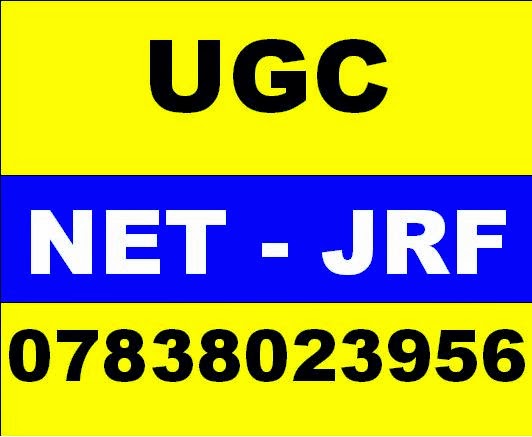1)
Introduction: In
the middle of the 17th century small groups of scholars and
philosophers began to meet in various places (including taverns) in London to
discuss the experimental method of scientific inquiry propounded by Francis
Bacon. This groups which later become known as “invisible colleges” could not
meet openly and regularly due to civil strife in England. The term invisible
college is coined by Robert Boyle. After the civil war ended, these natural
philosophers decided to established a formal constitution which results in the
foundation of one of the greatest scientific societies – The Royal Society on
July 15, 1662 and the meeting of individual colleges in England eventually culminated
in the establishment of the Royal Society.
2)
Characteristic:
The characteristic of invisible colleges are -
a) Membership in these invisible
colleges is not formalized but is dependent on the acceptance of one’s research
effort by peers.
b) The scientists see himself as
belonging to amorphous groups of fellows scientist who share his research
interest and attitude regardless of their organizational or geographical
locations.
c) The personal communication among
eminent workers in a given field keeps the others informed of the developments
in their field.
d) This group falsely assumes that
researches not included in their peer group or work done not in exactly their
field will not be of interest.
e) This group also assumes that the
researcher should be able to duplicate any steps along the way to his own
research goal.
f) It also assumes that one knows what
problem remains to be solved in one’s specialty.
“ugc”
“net”
“ugc net”
“net exam”
“net entrance”
“net jrf”
“net jrf”
“ugc net syllabus”
“ugc net jrf entrance exam coaching classes institute”
“ugc net jrf computer science exam coaching”
“ugc net jrf commerce exam coaching”
“ugc net jrf management exam coaching”
“ugc net jrf economics exam coaching”
“ugc net jrf mass communication exam coaching”
“ugc net jrf education exam coaching”
“ugc net jrf history exam coaching”
“ugc net jrf psychology exam coaching”
“ugc net jrf hindi exam coaching”
“ugc net jrf political science exam coaching”
“ugc net jrf human resource exam coaching”
“ugc net jrf library & information science exam coaching”
“ugc net jrf computer science exam coaching”
“ugc net jrf coaching exam coaching”
“ugc net jrf computer science exam coaching”
“ugc net jrf commerce exam coaching”
“ugc net jrf management exam coaching”
“ugc net jrf economics exam coaching”
“ugc net jrf mass communication exam coaching”
“ugc net jrf education exam coaching”
“ugc net jrf history exam coaching”
“ugc net jrf psychology exam coaching”
“ugc net jrf hindi exam coaching”
“ugc net jrf political science exam coaching”
“ugc net jrf human resource exam coaching”
“ugc net jrf library & information science exam coaching”
“ugc net jrf computer science exam coaching”
“ugc net jrf coaching exam coaching”
“ugc net jrf study
material”
“ugc”
“ugc”
“net”
“ugc net”
“net exam”
“net entrance”
“net jrf”
global teachers academy
D-2, Arjun Nagar Safdarjung Enclave, New Delhi
Near Green Park Metro Station
Ph. 078-380-239-56 , 078-380-243-65
http://www.gtah.net/
“net jrf”
global teachers academy
D-2, Arjun Nagar Safdarjung Enclave, New Delhi
Near Green Park Metro Station
Ph. 078-380-239-56 , 078-380-243-65
http://www.gtah.net/
www.ugcnetd.com
https://www.facebook.com/ugcnetcoachingdelhiindia
https://www.facebook.com/gtadh?ref=hl
https://www.facebook.com/ugcnetcoaching.delhi
https://www.facebook.com/ugcnetcoachingdelhiindia
https://www.facebook.com/gtadh?ref=hl
https://www.facebook.com/ugcnetcoaching.delhi
http://www.gtah.net/about-us.php
http://www.gtah.net/ugc-net.php
http://www.gtah.net/jnu-du.php
http://www.gtah.net/enquiry-now.php
http://www.gtah.net/results.php
http://www.gtah.net/contact-us.php
http://www.gtah.net/ugc-net.php
http://www.gtah.net/jnu-du.php
http://www.gtah.net/enquiry-now.php
http://www.gtah.net/results.php
http://www.gtah.net/contact-us.php
https://plus.google.com/+Ugcnetd/posts
|
https://www.facebook.com/ugcnetcoachings
http://in.linkedin.com/in/ugcnetcoaching http://ugcnetjrfcoaching.wordpress.com |
|
http://ugcnetd.wordpress.com
|
|
http://ugcnetcoachingugc.wordpress.com/
|
|
http://ugcnetcoachings.wordpress.com/
|
|
http://ugcnetjrfcoachings.blogspot.in
|
|
http://ugcnetgtah.blogspot.in/
|
|
http://netexamcoaching.blogspot.in/
|
|
http://ugcnetpsychologycoaching.blogspot.in/
|
|
http://ugcnetcommercecoaching.blogspot.in/
|
|
http://ugcnetmanagementcoaching.blogspot.in/
|
|
http://ugcnetexamcoaching.blogspot.in/
|
|
http://ugcnetenglishugc.blogspot.in/
|
|
http://ugcnetcoachings.blogspot.in/
|
|
http://ugcnetonlinecoachng.blogspot.in/
|
|
https://www.youtube.com/watch?v=OMJnpTIwKuY
|
|
https://www.youtube.com/watch?v=yIIl90pCwAI
|
|
https://www.youtube.com/watch?v=BfgfKMwfpsk
|
|
https://www.youtube.com/watch?v=z8oNow4w9-A
|
|
https://www.youtube.com/watch?v=yMRtgqHPnfA
|
|
https://www.youtube.com/watch?v=mzW2NoQZUbM
|
|
https://www.youtube.com/watch?v=ePCdZjXmVgc
|
|
https://www.youtube.com/watch?v=XV9rT3b2LZI
|
|
https://www.youtube.com/watch?v=2UouOJJtCyc
|
|
https://www.youtube.com/watch?v=m1kzxQVJdds
|
|
https://www.youtube.com/watch?v=0OsSCh8wpSU
|
|
https://www.youtube.com/watch?v=owZeCkfMas8
|
|
https://www.youtube.com/watch?v=Lj0m3Bf8D5A
|
|
https://www.youtube.com/watch?v=UOuqF5DcEUw
|
|
https://www.youtube.com/watch?v=PDb46OwJESs
|
|
https://www.youtube.com/watch?v=34fYjBW_L0M
|
|
https://www.youtube.com/watch?v=lCc8lY8PpjU
|
